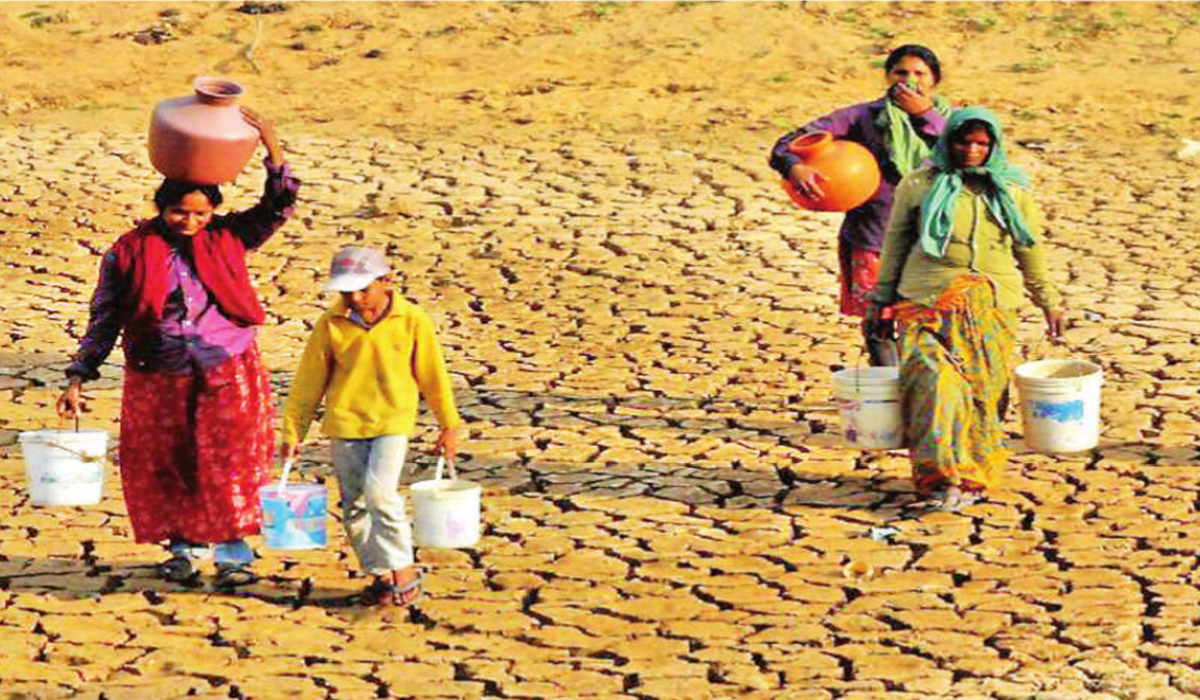
By 2035, the economic burden of droughts is projected to grow significantly, with the average drought costing at least 35 per cent more than it does today. This sobering forecast comes from a new report by the Organisation for Economic Co-operation and Development (OECD), which warns of intensifying drought-related impacts on economies, ecosystems, and human societies.
The report, OECD Global Drought Outlook: Trends, Impacts and Policies to Adapt to a Drier World, released on June 17, 2025, paints a stark picture of a planet growing drier and more vulnerable. With climate change and unsustainable water management practices amplifying the effects, the cost of inaction is mounting. According to the OECD, global economic losses due to drought are increasing at a rate of 3 to 7.5 per cent each year. Agriculture remains the most severely affected sector, with crop yields declining by as much as 22 per cent in particularly dry years. But the damage goes far beyond the fields — rippling into trade, energy production, and industrial output. The scale of recent droughts is already historic. In 2023 alone, 48 per cent of global land experienced at least one month of extreme drought — marking the second-widest drought coverage since 1951.
Regions most affected include the western United States, parts of South America, southern and eastern Europe, southern Australia, northern and southern Africa, and swathes of Russia. These are becoming drought hotspots, where dry conditions are not only more frequent but also more intense. Forty per cent of the planet has seen a measurable increase in drought frequency and severity in recent decades. Much of this is attributed to climate change, but the OECD also notes that unsustainable land use and water extraction practices are accelerating the problem. Environmental consequences are escalating. Since 1980, over a third of global land — roughly 37 per cent — has suffered significant soil moisture loss. Groundwater is vanishing too, with 62 per cent of monitored aquifers around the world showing declining levels. Rivers, the lifeblood of many ecosystems and human communities, are also under stress, with many exhibiting sharp reductions in stream flow.
T h e s e w a t e r- r e l a t e d changes are more than just hydrological anomalies — they threaten the very functioning of natural systems. Declining water availability weakens forests and wetlands, diminishes plant biomass, disrupts wildlife distribution, and undermines biodiversity. This not only reduces nature’s resilience to future droughts but also affects crucial ecosystem services — like water purification, carbon sequestration, and climate regulation — that underpin human wellbeing. The social consequences are equally dire. Droughts are responsible for 34 per cent of deaths caused by natural disasters, making them the deadliest climate-driven hazard on record.
SubSaharan Africa, in particular, faces a compounded threat: droughts there are not only more frequent but also deeply entangled with poverty, food insecurity, and displacement. Communities living on the edge are often left with little choice but to migrate, further straining already stretched infrastructure and governance systems. I n l i g h t o f t h e s e interconnected challenges, the OECD report calls for urgent, integrated action. It stresses the need to move beyond emergency responses and toward a proactive, system-wide approach to drought resilience. “Reactive measures are no longer enough,” the report notes. “We need to rethink how societies value and manage water, land, and ecosystems, especially as the risks grow more complex.”
Some solutions already exist — they just need to be scaled. For instance, innovations in industrial water use, such as recycling and rainwater harvesting, can significantly cut down on the amount of fresh water withdrawn from rivers and aquifers. Similarly, switching to droughtresistant crop varieties and adopting efficient irrigation technologies could dramatically reduce the water footprint of agriculture, which currently accounts for around 70 per cent of global freshwater withdrawals. Land management practices also matter. Preventing deforestation, restoring wetlands, and reforesting degraded areas can enhance natural water retention and reduce runoff, increasing the resilience of both ecosystems and human settlements. These nature-based solutions, while often overlooked, offer multiple benefits — including climate mitigation and biodiversity protection. The report recommends that governments offer financial incentives for such transitions and remove barriers that limit adoption. Regulatory alignment is also essential. For example, updating water usage norms, encouraging smart pricing of water resources, and integrating drought risk into land-use planning could yield longterm dividends.
Importantly, the OECD emphasizes the need for international cooperation, especially since droughts often transcend borders. Shared river basins, trade dependencies, and global supply chains mean that the impact of a drought in one region can quickly ripple across continents. Multilateral frameworks and regional drought monitoring systems will be crucial in fostering a coordinated response. What the report makes clear is that tackling drought is not only an environmental necessity — it’s an economic and social imperative.
The rising costs and cascading consequences of inaction make it one of the most urgent issues of our time. As the world confronts rising temperatures, increasingly erratic rainfall, and surging demand for water and food, the message from the OECD is unequivocal: adapt now, or pay dearly later. In a world headed toward drier horizons, resilience is no longer optional — it is survival
